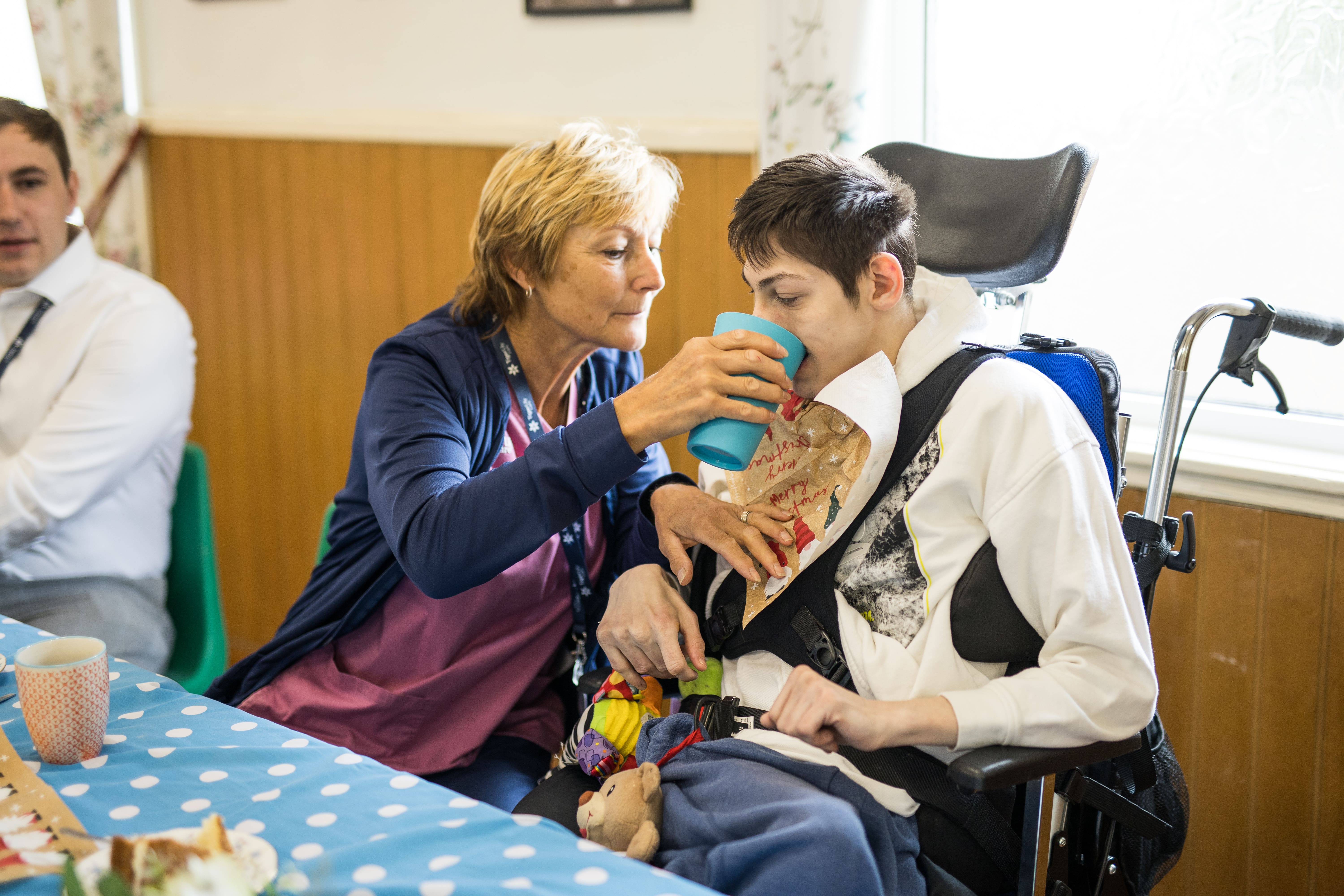Chronic health conditions are illnesses that cannot be cured, but are instead ‘managed’ by taking medications or undertaking another form of health intervention. Common chronic conditions include arthritis, diabetes, heart disease, dementia, and COPD.
While hospitals and GPs play an important role in treating these conditions, the majority of day-to-day management of these conditions happens at home. With an increasing number of people living with chronic health conditions, especially in our older population, it’s never been more important to understand how to manage these conditions safely.
For many families, this means stepping into caregiving roles. Knowing how best to support your loved one can feel overwhelming, but with the proper knowledge and support, you can provide effective and compassionate care at home.
Understanding Chronic Conditions and Their Impact
Chronic conditions are long-term illnesses, often progressing gradually and affecting the individual for many years. These conditions require ongoing lifestyle, medication, and other health intervention management.
Examples of chronic health conditions include:
- Cardiovascular diseases (e.g., high blood pressure, heart failure)
- Respiratory illnesses (e.g., asthma, COPD)
- Neurological conditions (e.g., Parkinson’s, dementia)
- Musculoskeletal conditions (e.g., arthritis, osteoporosis)
- Diabetes and metabolic syndrome
These conditions can affect every aspect of everyday life, from physical activity and energy levels to mood and memory. Older adults are often impacted by multiple chronic health conditions, adding further challenges to treatment and caregiving.
Your healthcare provider can give you more information about safely managing multiple chronic health conditions, helping you to plan effective care at home.
Building a Safe and Supportive Home Environment
The home environment plays an essential role in managing long-term health conditions. Well-thought-out home adaptations can reduce risks, help to conserve energy, and make everyday life more manageable (and independent!).
Home Safety Modifications
- Remove trip hazards like loose rugs or piles of clutter.
- Install handrails and grab bars at key movement locations (such as on the stairs or by the toilet).
- Improve lighting (especially in hallways and doorways).
- Ensure flooring is non-slip (especially in kitchens and bathrooms).
Medication and Equipment Management
- Make use of medication organisers or phone reminders to help manage complex prescriptions.
- Store medicines in a secure and accessible place.
- Keep mobility aids (such as frames or sticks) within easy reach. Make sure that an occupational therapy-trained professional has assessed the suitability of any assistive devices.
- Seek help from healthcare professionals to learn how to safely use, clean, and maintain medical devices such as glucose monitors, inhalers, or oxygen delivery machines.
Comfort and Accessibility
- Arrange furniture to ensure walkways are kept clear and essential items are easily accessible.
- Position frequently used items at waist level to avoid strain or injury from unnecessary bending or reaching.
- Use sturdy, supportive, and comfortable chairs. Consider using riser-recliner chairs or specialised ‘hospital at home’ equipment as necessary.
- Make sure food, drink, medication, communication devices, entertainment, and bathroom facilities are all easily accessible.
Coordinating Medical and Care Support at Home
Managing chronic illness often requires input from a range of professionals. Effective communication and coordination can prevent gaps in care and reduce feelings of stress for the individual and their caregivers.
- Schedule regular GP appointments and check-ups. People with chronic health conditions may need to attend regular clinic appointments with a specialist doctor or nurse.
- Keep a shared care folder containing medication lists (ideally a single page detailing the drug name, dose, when it is taken, and what it is for), test results, diagnoses, treatment notes, and any other relevant health information. Ensure that the healthcare provider and family contact information is at the front of the folder.
- Coordinate with other health professionals such as physiotherapists, occupational therapists, podiatrists, and dietitians.
- Use care plans that detail daily routines, preferences, and emergency information.
A home care provider can assist you with coordinating care needs, helping you to plan and carry out daily care. Even a few hours a week of support with personal care, meal preparation, or companionship can be significantly beneficial.
Daily Routines and Lifestyle Support
Consistency and routine are key when it comes to managing chronic health conditions. Regular habits can help with medication adherence, noticing symptom patterns, and maintaining adequate energy levels throughout the day.
Nutrition and Hydration:
- Plan balanced meals that provide essential nutrients and energy while conforming to condition-specific dietary needs (e.g., low salt for people with heart disease).
- Offer frequent small and flavourful meals for people with a reduced appetite. Always ensure that healthy snacks are on hand.
- Ensure adequate hydration with regular drinks and water-rich foods.
Exercise and Physical Therapy:
- Encourage light daily movements, as guided by a physiotherapist. Activities may need to be assessed and adapted to meet an individual’s needs.
- Support equipment, such as resistance bands or walking aids, may be needed to support safe exercise. Some people may require chair or bed-based exercises depending on their mobility and stability.
- Regular gentle stretching can help to maintain flexibility and prevent stiffness.
Rest and Energy Conservation
- Plan the day around energy levels, ensuring there is enough time for rest and relaxation between more intensive tasks.
- A good daily routine will include both scheduled and ‘as-needed’ rest times to prevent unnecessary fatigue.
Even small changes to daily life, such as getting dressed at the same time or going for a walk each morning, can benefit a person’s physical and mental health.
Emotional and Mental Health Considerations
Living with a chronic condition can take a toll on emotional well-being. Depression and anxiety are more common in people with long-term illnesses, and emotional distress can, in turn, affect physical symptoms.
You can support a loved one’s mental well-being by:
- Encouraging open conversations about feelings and fears. You don’t have to be an expert, just lend a non-judgmental and compassionate ear.
- Helping to maintain social connections. This may include phone calls, messages, video calls, or in-person visits. You may find it helpful to reach out to support groups that offer social activities tailored to your loved one’s health needs.
- Creating space for hobbies, relaxation activities, and spiritual practices.
- Recognising signs of low mood or anxiety. Your GP or another appropriately trained mental health professional can offer a wide range of support.
- Engaging in ‘cognitive stimulation’ to keep the brain active and healthy. This may include playing games, having a discussion, reading, or listening to music.
Family Involvement and Caregiver Wellbeing
Family carers are often the unsung heroes of home healthcare. But without proper support, the demands of caregiving can lead to burnout. Supporting people with chronic health conditions frequently involves planning for the long term, ensuring that any care plans can stand the test of time.
Setting Boundaries and Expectations
Without clear boundaries and expectations, important tasks can be overlooked. Unplanned and urgent changes can be stressful, often placing an unnecessary burden on the individual and their caregivers.
Clarify in advance who is responsible for what activities (e.g., a carer organising the weekly medication, or a family member booking transport for a hospital visit). Be honest and open about what can be realistically managed. Say yes when help is offered and reach out for it when it’s not.
It’s also ok to say no. Ensure your loved one is safe and comfortable for the time being and arrange additional support as soon as practically possible.
Caring for the Carer
If you are not looking after yourself, you won’t be able to look after your loved one in the long term. Prioritise your own meals, sleep, and breaks. Make sure your loved one’s routine is planned around your own essential needs, accessing care support as needed.
Your mental health is just as important as your physical health. Schedule regular time for yourself every day (even if just for 30 mins). Local support services can be a lifeline when it comes to remaining resilient as a carer. This may include local carer groups or planned respite care for a few days.
When to Seek Additional Help or Make Changes
It’s essential to review how well the current care setup is working regularly. Sometimes, extra help or a new approach is needed. You may find yourself needing more support if:
- Symptoms worsen or hospital visits become more frequent.
- Personal circumstances change. This may include a deterioration in your own physical or mental health.
- Things start getting missed (including personal care tasks, medical appointments, or medication doses).
- Your loved one’s mobility or stability changes, creating a new safety risk.
Several support options are available to you. It’s always best to plan for changes early and be ready to implement additional help as soon as it’s needed. Some options to consider include:
- Increasing home care hours or services (for example, someone who previously only needed personal care assistance may now benefit from nursing visits to support their increased medical needs).
- Installing emergency call systems.
- Speaking with your GP or social worker about a care needs assessment.
- Exploring supported living or care home options when appropriate.
Any changes should be discussed with your loved one, ensuring that dignity and quality of life are prioritised in every decision. You do not have to do this alone, and help is always available.
To Recap
Managing chronic conditions at home is a team effort that involves adaptability, patience, and planning. With the right tools, mindset, and support, families can create an environment where their loved one feels safe, empowered, and cared for.
Focus on what matters most: comfort, connection, and consistency. Start by identifying small changes you can make today, whether it’s installing a grab bar, preparing a weekly meal plan, or booking a check-in with a home care provider.









